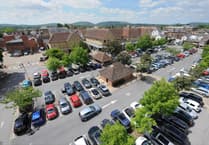The review, being conducted by the Local Government Boundary Commission for England (LGBCE), is based upon predictions for the population up to 2023. Revised boundaries would be confirmed early next year, in advance of the next district council elections in May 2019.
The review covers the district’s internal ward boundaries only, not parish, county or parliamentary boundaries. However The Commission says it will try to make parishes the building blocks of future district wards.
Currently, the district average of 1,989 electors per councillor varies, with figures showing Grayshott has minus six per cent of the average voters, Lindford plus three per cent, Headley plus 10 per cent, and Bramshott with Liphook plus 11 per cent.
Elsewhere in East Hampshire, the variance is as much as plus 28 per cent, as is the case of Four Marks and Medstead, or minus 21 per cent of the average in the case of Petersfield East ward.
The growing disparity means electoral inequality, with 17 of the district’s wards now containing an electoral population at a variance of greater than 10 per cent from the 2015 average of 1,989 per councillor.
Before the commission makes its recommendations, East Hampshire District Council Community Forums are having discussions in public this month.\
Submissions will be made to the commission next month (March), and between May and July there will be an initial public consultation on ward boundaries. The review will also consider the total number of district councillors, the quantity of councillors per ward and the names of wards.
The commission says it has no fixed “ideal” number of electors per councillor. In its recommendations, the commission will attempt to recognise local identity, physical barriers and administrative convenience.
A district council report said: “The commission will consider the pattern of the local election cycle only if the district council wishes it do s.
The options are: (a) the current all-councillors election every four years, or (b) moving to annual elections for one-in-three councillors with no district elections in the fourth year.
If the council were to elect in thirds, larger wards would probably be created so each contained three councillors, the report added.
The review has also been triggered by the length of time since the last review, which was in 2000 and took effect in 2003.




Comments
This article has no comments yet. Be the first to leave a comment.